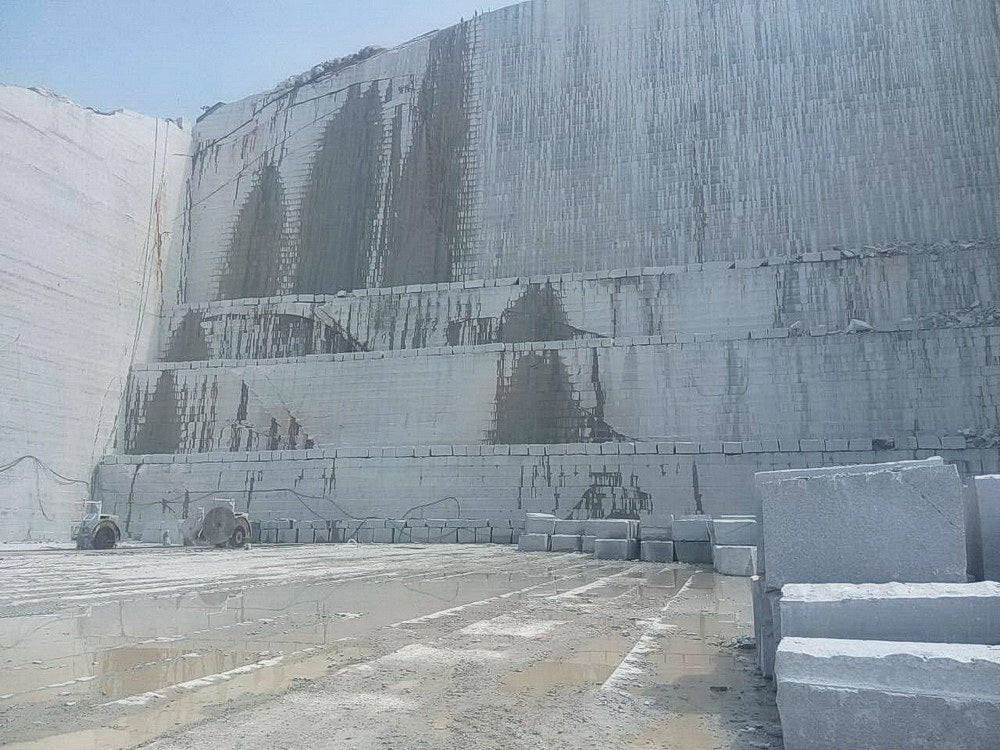Unearthing the Rich Background and Lasting Practices of Granite Quarrying
As we depend on the precipice of discovering the elaborate tapestry of granite quarrying, a journey with time reveals not simply the physical act of extracting rock but also the cultural and historic value woven right into the extremely fabric of this method. From the old origins that laid the foundation for contemporary quarrying techniques to the sustainable techniques that are forming the future of this industry, each sculpt mark on granite surfaces informs a story waiting to be discovered (granite quarries in south africa). The heritage of granite quarrying extends far past mere extraction; it is a testimony to human resourcefulness, resilience, and the long-lasting appeal of this stunning rock
Ancient Beginnings of Granite Quarrying
Going back to old people, the practice of quarrying granite has been an integral part of human background and building innovation. The earliest evidence of granite quarrying days back to ancient Egypt, where large pyramids and detailed sculptures were crafted from this sturdy rock. The Egyptians utilized primitive tools to extract granite blocks from quarries, showcasing the significance of this material in their significant buildings.
Relocating forward in background, the Greeks likewise made substantial payments to the quarrying of granite. The Greeks made use of granite in numerous building wonders, such as temples and statues, demonstrating their skill in shaping and carving this hardy stone. The Romans additionally fine-tuned the methods of quarrying granite, utilizing innovative devices like knives and hammers to extract and form granite for their renowned frameworks.
Via the centuries, the technique of quarrying granite has advanced, with modern innovations boosting performance while keeping the ageless charm of this natural stone - granite quarries in south africa. From ancient civilizations to contemporary contractors, the legacy of granite quarrying continues to shape our globe
Advancement of Quarrying Techniques
The evolution of quarrying strategies has actually been marked by a constant progression towards greater performance and precision in extracting granite. From the fundamental techniques employed by our forefathers to the advanced technologies utilized in modern quarrying procedures, the market has undertaken considerable innovations. Early quarrying methods involved manual labor with standard tools such as chisels, hammers, and wedges to remove granite blocks from the planet. As human beings advanced, techniques like fire-setting and primitive nitroglycerins were introduced to help with the removal process.
In more recent times, the introduction of equipment changed the quarrying market, allowing much faster extraction prices and increased efficiency. Technologies such as ruby cable saws, high-pressure water jets, and pneumatically-driven drills have ended up being basic in contemporary quarries, enabling accurate cutting and reduced waste. Moreover, developments in computer-controlled tools and 3D modeling have actually maximized quarrying operations, bring about minimal environmental influence and boosted sustainability techniques. As the demand for granite remains to rise, the evolution of quarrying methods check out here stays important to conference market needs efficiently and sustainably.
Social Value of Granite
Granite holds an extensive social relevance across different people because of its enduring find out presence in building work of arts and revered monuments. From the stunning pyramids of Egypt to the elaborate carvings of the Angkor Wat holy place in Cambodia, granite has actually been a product of selection for revealing splendour and longevity in social heritage. In old Rome, granite columns adorned temples and public structures, signifying stamina and permanence. The cultural importance of granite extends beyond its physical features; it symbolizes resilience, stability, and eternity, making it a sign of enduring heritages and customs.

Sustainable Practices in Quarrying
Amidst the abundant history of granite quarrying and its cultural significance lies an expanding emphasis on sustainable methods within the sector. As ecological understanding and issues about source exhaustion have enhanced globally, the quarrying sector has actually progressively embraced lasting methods to decrease its influence on the setting and surrounding areas.

Furthermore, recovery and recovery of quarry sites post-extraction are website link essential to sustainable techniques. By bring back quarried areas to a natural or advantageous state, such as producing wildlife habitats or entertainment spaces, quarriers can offset the environmental impact of their operations and contribute positively to the local ecosystem.
Heritage of Granite Quarrying
With a historic background steeped in craftsmanship and commercial progression, what withstanding effect has granite quarrying left on the landscape of modern culture? The legacy of granite quarrying transcends plain removal methods; it has formed building wonders, metropolitan landscapes, and cultural heritage worldwide. The sturdy nature of granite has actually made it a favored choice for monoliths, buildings, and infrastructure, standing as a testimony to the ability and artistry of quarry employees across generations.
Furthermore, the financial footprint of granite quarrying can not be overlooked. The sector remains to provide work chances and drive neighborhood economies in areas where granite removal is common. It has actually likewise stimulated technical improvements in quarrying techniques and tools, causing much more efficient and lasting methods.
In regards to sustainability, the legacy of granite quarrying includes initiatives to minimize environmental influences via reclamation jobs and liable resource monitoring. By stabilizing economic interests with environmental stewardship, the sector aims to make certain that future generations can remain to gain from this long-lasting all-natural resource.
Conclusion
